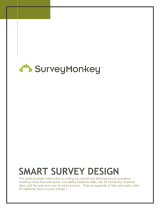Sharp MXM283N is a high-volume, black-and-white multifunction printer that provides fast, reliable, and secure printing, copying, scanning, and faxing for businesses and organizations of all sizes. With its robust design and advanced features, the MXM283N is ideal for handling high-volume printing needs while maintaining exceptional quality and efficiency.
Key Features and Benefits:
- Fast printing speeds of up to 28 pages per minute
- Automatic duplex printing for double-sided output
- High-resolution scanning up to 600 dpi
- Versatile paper handling options, including a 500-sheet paper tray and a 100-sheet multipurpose tray
Sharp MXM283N is a high-volume, black-and-white multifunction printer that provides fast, reliable, and secure printing, copying, scanning, and faxing for businesses and organizations of all sizes. With its robust design and advanced features, the MXM283N is ideal for handling high-volume printing needs while maintaining exceptional quality and efficiency.
Key Features and Benefits:
- Fast printing speeds of up to 28 pages per minute
- Automatic duplex printing for double-sided output
- High-resolution scanning up to 600 dpi
- Versatile paper handling options, including a 500-sheet paper tray and a 100-sheet multipurpose tray
















-
 1
1
-
 2
2
-
 3
3
-
 4
4
-
 5
5
-
 6
6
-
 7
7
-
 8
8
-
 9
9
-
 10
10
-
 11
11
-
 12
12
-
 13
13
-
 14
14
-
 15
15
-
 16
16
Sharp MXM283N User manual
- Type
- User manual
- This manual is also suitable for
Sharp MXM283N is a high-volume, black-and-white multifunction printer that provides fast, reliable, and secure printing, copying, scanning, and faxing for businesses and organizations of all sizes. With its robust design and advanced features, the MXM283N is ideal for handling high-volume printing needs while maintaining exceptional quality and efficiency.
Key Features and Benefits:
- Fast printing speeds of up to 28 pages per minute
- Automatic duplex printing for double-sided output
- High-resolution scanning up to 600 dpi
- Versatile paper handling options, including a 500-sheet paper tray and a 100-sheet multipurpose tray
Ask a question and I''ll find the answer in the document
Finding information in a document is now easier with AI
Related papers
-
Sharp MX-4100N Government Compliance
-
Sharp MX-2600N Government Compliance
-
Sharp MX-M232D Government Compliance
-
Sharp MX-M550 Government Compliance
-
Sharp MX-M850 Government Compliance
-
Sharp AR-208D Government Compliance
-
Sharp MX-C250 Government Compliance
-
Sharp MX-C250 Government Compliance
-
Sharp MX-6240N Government Compliance
-
Sharp MX-2310U Government Compliance
Other documents
-
Microsoft 4M5-00002 User guide
-
Visioneer Strobe 500 Owner's manual
-
Sonnet xMac mini Server Owner's manual
-
Xerox 6115 User manual
-
Epson GT-15000 User manual
-
Avaya V3.2 Product Bulletin
-
 SurveyMonkey - 2011 - Smart Survey Design User manual
SurveyMonkey - 2011 - Smart Survey Design User manual
-
2Wire XTS 3000 User manual
-
HP Value 34-inch Displays User guide
-
HP Value 27-inch Displays User guide
















